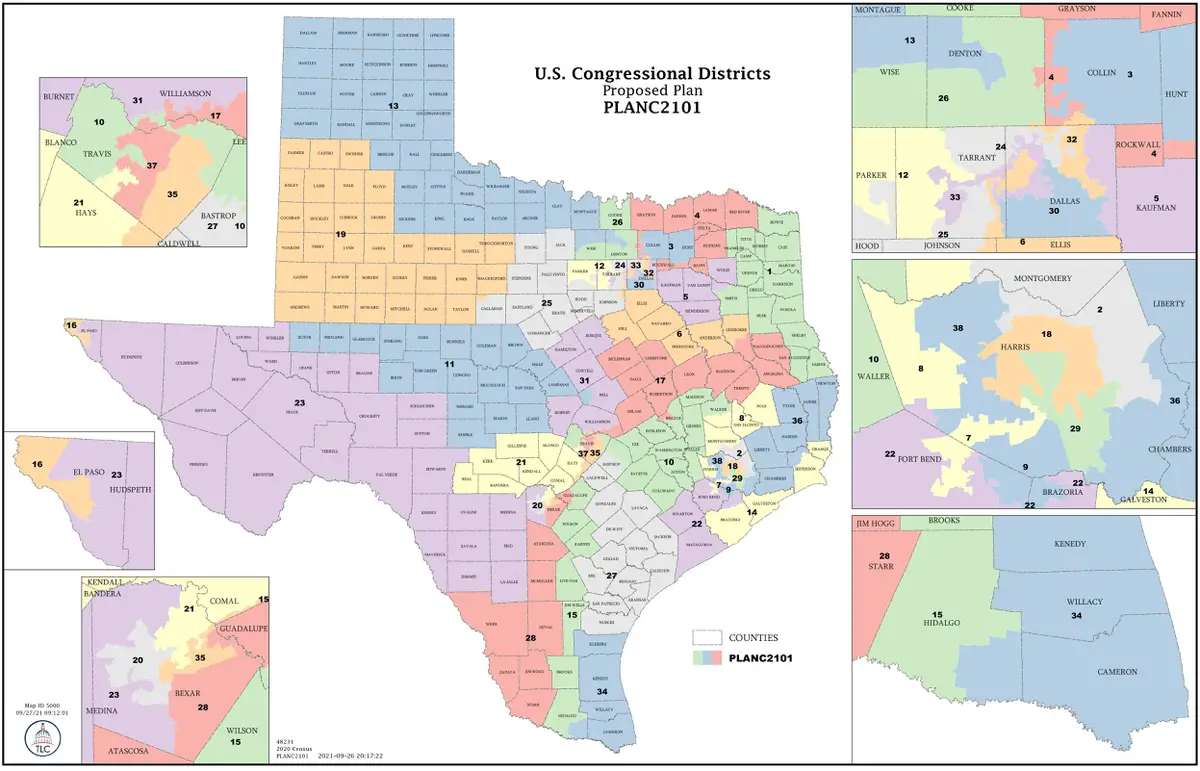Texas redistricting plan fortifies GOP edge, puts new seats in Austin, Houston

AUSTIN, Texas -- Texas lawmakers on Monday released their first draft of a new congressional map for the next decade that includes two new districts in Austin and Houston — metropolitan areas with diverse populations which fueled much of the state's population growth over the past 10 years.
Republicans constructed this map with incumbent protection in mind — a strategy that focused on bolstering Republican seats that Democrats targeted over the last two election cycles rather than aggressively adding new seats that could flip from blue to red. However, the map does in fact strengthen Republican positioning overall going from 22 to 25 districts that voted for Donald Trump in 2020. The number of districts that voted for Joe Biden would shrink by one, from 14 to 13.
Texas members of the House GOP delegation were closely involved in the drawing process and approved the map last week, according to two sources close to the Texas delegation.
While many incumbents appear safe in these maps, others were drawn into districts that overlap with one another — for example the proposed map pits Houston Republican Rep. Dan Crenshaw against Democrat Rep. Sylvia Garcia. It also pits two Houston Democrats — Reps. Al Green and Sheila Jackson Lee — against one another.
The maps were proposed by state Sen. Joan Huffman, R-Houston, who leads the chamber's redistricting committee.
Democrats, who have been out of power for decades, have attempted to make state elections more competitive but the redrawing of congressional maps gives the GOP an opportunity to lock in their advantage for another decade.
Texas' current 36-seat congressional delegation is made up of 23 Republicans and 13 Democrats. Under the new map, Texas will have 38 congressional seats, and 40 electoral votes in future presidential contests.
Huffman's first 38-district proposal would widen the gap between the parties, creating 25 districts that voted for Trump in 2020 and 13 that voted for Biden.
The racial make-up of the congressional maps is also expected to change as Texas added two new congressional seats based on last decade’s population growth, which was mostly driven by people of color. Based on eligible voters, the current map includes 22 districts with white majorities, eight with Hispanic majorities, one with a Black majority and five that have no majority. The newly proposed map includes 23 districts with white majorities, seven with Hispanic majorities, none with a Black majority and eight that have no majority.
This is only the first draft of the map, which is likely to change before it's passed by the Texas Legislature and signed into law by Gov. Greg Abbott.
This will be the first round of political map-making in Texas since the U.S. Supreme Court struck down provisions to protect voters of color from discrimination. Previously, states with long histories of voting discrimination, like Texas, had to receive approval from the federal government before making any changes to election laws or political maps.
But the U.S. Supreme Court essentially did away with that requirement in 2013, leaving no buffer for voters of color if lawmakers pass discriminatory maps.
Since the enactment of the Voting Rights Act in 1965, Texas has not made it through a single decade without a federal court admonishing it for violating federal protections for voters of color.
